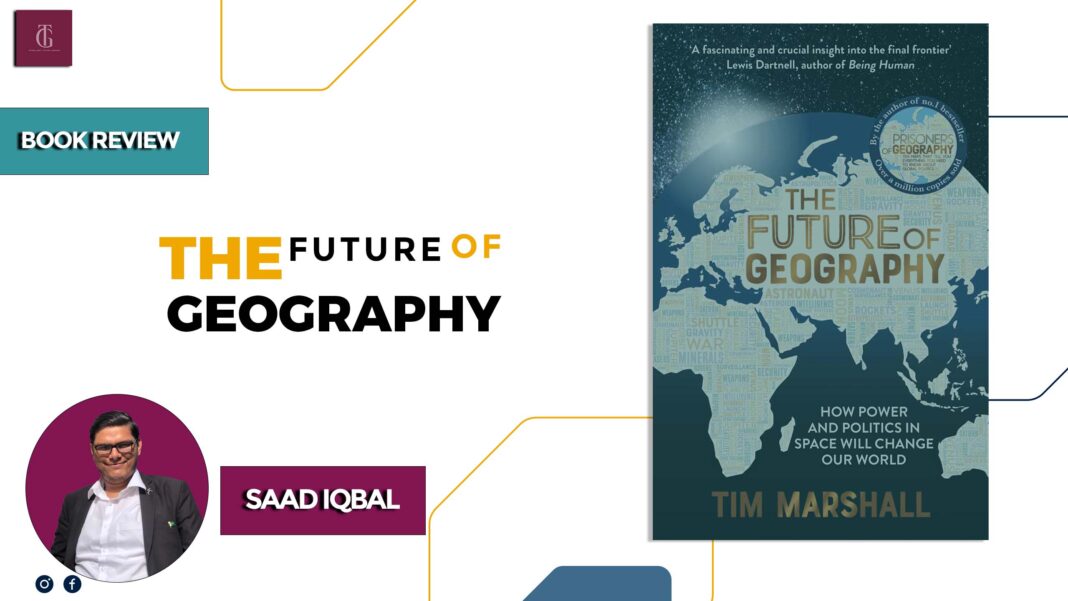For the first time since the late 1960s, space exploration and satellite technologies are making headlines. This is due to developments such as Elon Musk’s SpaceX using reusable rockets to launch thousands of Starlink satellites into orbit and the emerging competition between the United States and China for resources on the Moon. Both of these developments are bringing space exploration and satellite technologies back into the public eye. In addition to these large nations, a number of countries who were previously absent from the space race are now actively participating in it. The United Arab Emirates and Estonia are two examples of countries that have sent rovers to explore the surface of the moon.
Tim Marshall, a journalist and author, presents an enlightening but insufficient introduction to the geopolitical ramifications of the renewed war for space in his most recent book. The publication of this book has been delayed for quite some time, but from my perspective as a researcher and practitioner of space policy, the wait has been more than worthwhile.
When it comes to matters of cosmic and world politics, Marshall is at his best.
The author makes a convincing argument that the Outer Space Treaty of 1967 and other existing international legal frameworks are unable to cope with the rising commercialization of space and the influx of new space players.
Marshall is also correct in his warnings about the perils of space conflict, which, according to him, would create so much space debris that it “will continue to pose a danger to crucial satellite networks and space stations, as well as to human life,” so leaving the domain uninhabitable for years to come. By examining the contentious governance argument about how, if at all, operations on the Moon should be regulated, the author provides much-needed insight into the complexity of lunar exploration.
His discussions of the links between geopolitics on Earth and space exploration are also useful. One example is the significance of location when choosing sites for space launch operations, while another is the competition between China and the United States for control of the Moon’s south pole, which contains large deposits of ice water that could be converted into oxygen and fuel.
Despite the fact that many nations, including those in Africa, the Middle East, and Asia, now have a presence in space and a national space program, and despite the fact that many policy and business experts are encouraging firms to adopt corporate space policies, Marshall fails to explain why this is the case.
Launch prices have dropped significantly over the last two decades, from at least $10,000 per kilogram to less than $2,000 per kilogram. A significant contributor to this decrease is SpaceX’s employment of reusable rocket boosters, in addition to their hectic launch schedule. The rapid development of microprocessors is resulting in the production of smaller satellites and spacecraft that are more competent at a lower cost, which is pushing the rise of space access.
Marshall fails to take into account the strategic aspects of space power that are responsible for the contemporary political significance of astropolitics. The success of modern economies and militaries is heavily reliant on satellites for communications, navigation, and earth observation; yet, the reader is left wondering whether or not activities comparable to these can be carried out in other environments, such as airspace.
It is possible for satellites to orbit above governments without intruding on their sovereignty, contrary to aircraft like as the spy balloons that prompted a diplomatic controversy between the United governments and China earlier this year. Marshall might have made this argument. It’s possible that he looked at how even the most insignificant regimes might feel like they have a strategic presence thanks to satellites.
The uncorrected proof that I read originally belonged to Marshall, and it included errors on occasion. As an example, in 2008, as part of Operation Burnt Frost, the United States successfully brought down a rogue surveillance satellite at an altitude of 350 kilometers, as opposed to 241,000 kilometers.
In spite of these qualms, Marshall should be commended for reporting on an issue that has received little coverage. The expansion of economic and military goals in space is substantial, and it is practically guaranteed that it will play a large role in the most high-stakes periods of conflict between the United States and China.
In his conclusion to The Future of Geography, Marshall expresses some skepticism regarding our collective ability to cooperate in space and share in its benefits; however, he also offers some hope: “Given all recorded human history, it is unlikely that we will recognize our common humanity and work together in space to harvest its riches and then distribute them equally. “Anyone who is interested in gaining a deeper understanding of the complexities surrounding these geopolitical possibilities and worries should read “The Future of Geography.”






